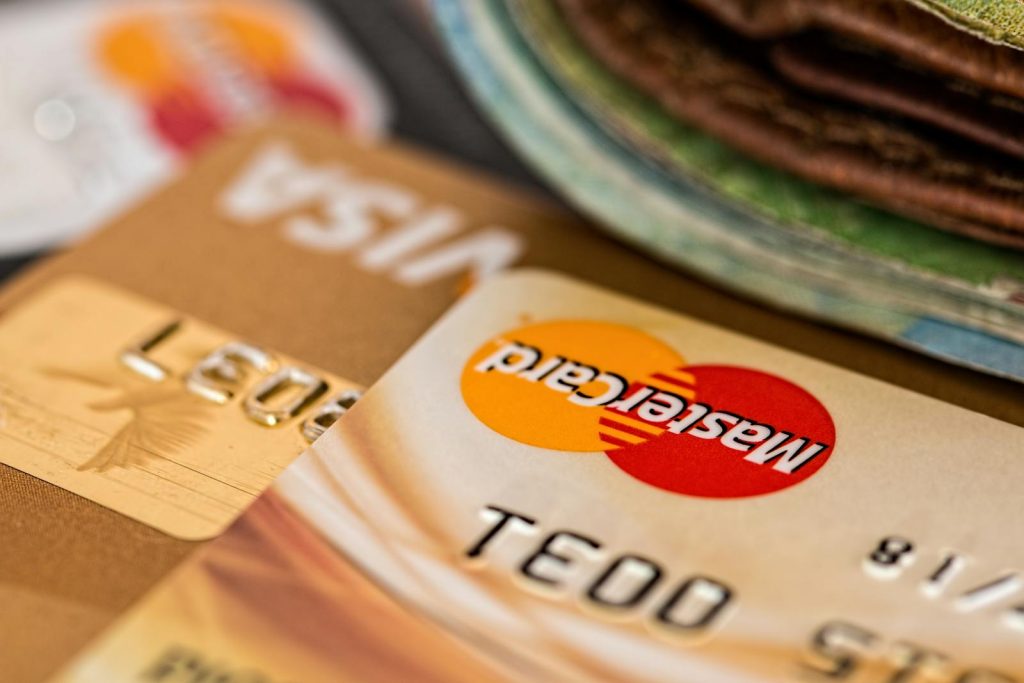Managing credit card receipts is a critical aspect of personal and business finance. Whether it’s for expense tracking, budgeting, or preparing for tax season, understanding how to effectively handle credit card receipts can save time, reduce stress, and ensure financial accuracy. This guide will explore the best practices, tools, and strategies for managing credit card receipts, covering everything from why it’s important to the best ways to store and organize them.
Table of Contents
1. Importance of Managing Credit Card Receipts
Understanding the significance of managing credit card receipts is the first step toward financial organization. Credit card receipts provide a detailed record of your spending, helping you track expenses accurately. They also allow you to monitor your spending habits and adjust your budget accordingly. Receipts are crucial for documenting deductible expenses, ensuring you can claim them during tax season. In case of billing errors or disputes, receipts serve as proof of purchase and can help resolve issues with merchants or credit card companies. Additionally, well-managed receipts help you stay organized and prepared for any financial situation, enhancing your overall financial management.
2. Organizing Credit Card Receipts

Effective organization of credit card receipts can streamline your financial management. Categorizing receipts by expenses such as groceries, utilities, business expenses, and personal spending can provide clarity and ease of access. Arranging receipts chronologically helps in tracking monthly and yearly spending patterns. Using folders, whether physical or digital, to keep receipts organized by category and date ensures that you can quickly find any receipt when needed. By maintaining an organized system, you reduce the risk of losing important receipts and simplify the process of financial reviews and audits.
3. Storing Credit Card Receipts
Proper storage of credit card receipts ensures they remain accessible and intact. Physical storage methods such as envelopes, binders, or filing cabinets are effective for keeping physical receipts organized. Ensure these are stored in a dry, secure place to prevent damage. Digital storage, on the other hand, involves scanning and saving receipts. Cloud storage services like Google Drive, Dropbox, or dedicated receipt management apps provide easy access and backup, ensuring that your receipts are safe from physical damage and always available when needed. Digital storage also allows for quick searching and categorization, making it a convenient option for many.
4. Digital Tools for Managing Credit Card Receipts
Numerous digital tools can simplify the management of credit card receipts. Receipt management apps like Expensify, Receipt Bank, and Shoeboxed allow you to scan, categorize, and store receipts digitally. These apps often offer additional features such as expense tracking and integration with accounting software. Cloud storage services like Google Drive and Dropbox provide secure and accessible storage for scanned receipts, ensuring that your receipts are always backed up and available from any device. Accounting software programs like QuickBooks and Xero offer integrated receipt management features, making it easy to track and organize expenses directly within your accounting system.
5. Best Practices for Credit Card Receipt Management
Implementing best practices can enhance your receipt management process. Conducting regular security audits and risk assessments is essential for identifying and mitigating potential vulnerabilities. Regularly reviewing receipts ensures they are correctly categorized and stored, preventing any gaps in your records. Setting up a routine for collecting, organizing, and storing receipts, such as a weekly or monthly review, helps maintain consistency. Regularly backing up your digital receipts prevents data loss in case of hardware failure or cyber threats. Retaining receipts for as long as necessary based on legal and tax requirements, typically at least three to seven years, ensures compliance and readiness for audits.
6. Common Challenges in Managing Credit Card Receipt
Managing credit card receipts can come with challenges. Misplacing receipts is a common problem. Use digital tools to scan and store receipts immediately after purchase to minimize loss. Accumulating a large number of physical receipts can lead to clutter. Regularly declutter by discarding non-essential receipts and organizing the rest. Inconsistency in receipt management can lead to gaps in your records. Establish and stick to a routine to ensure all receipts are accounted for. Additionally, staying updated with the latest regulations and practices can be challenging but is necessary for compliance and effective management.
7. Credit Card Receipt Management for Businesses
Businesses often have more complex receipt management needs. Implement policies for employees to submit receipts for business expenses. Use expense management software to streamline the process. Organized receipts are essential for internal and external audits. Ensure receipts are categorized and stored in a way that makes them easily accessible for auditors. Businesses must comply with tax regulations by keeping detailed records of all expenses. Proper receipt management can prevent issues during tax filings and audits. Additionally, businesses should consider integrating receipt management with their overall financial and accounting systems for seamless operation.
8. Legal and Tax Considerations for Credit Card Receipt
Credit card receipts play a crucial role in legal and tax compliance. Receipts are necessary to substantiate tax-deductible expenses. Ensure you keep receipts for all deductible purchases. Receipts serve as legal proof of purchase and can be crucial in resolving disputes with vendors or credit card companies. Different jurisdictions have varying requirements for how long you must retain receipts. Familiarize yourself with the regulations applicable to your situation. Keeping detailed and organized records of receipts helps ensure compliance with legal and tax requirements, preventing potential fines and legal issues.
9. Tips for Efficiently Managing Credit Card Receipts
Efficiency is key to effective receipt management. Automate when possible by using apps and software that categorize and store receipts. Develop a consistent filing system for both physical and digital receipts. Regularly update and review your receipt records to avoid falling behind. Educate yourself on best practices and new tools for receipt management. Staying informed about the latest trends and technologies can help you streamline your process and maintain efficient management. Implementing these tips can save time and reduce stress, ensuring that your receipt management system is always up-to-date and effective.
10. Benefits of Effective Credit Card Receipt Management
Effective receipt management offers numerous benefits. Clear and organized records provide better insight into your spending patterns and financial health. Efficient management saves time during tax season and when resolving disputes. Knowing your receipts are well-organized reduces stress and helps you stay prepared for any financial situation. Accurate records help you create and stick to a realistic budget. Effective receipt management also ensures compliance with legal and tax requirements, preventing potential issues and fines. By maintaining a well-organized system, you can enjoy peace of mind and better control over your finances.
11. Common Mistakes to Avoid in Credit Card Receipt Management
Avoid these common mistakes to ensure effective receipt management. Ignoring small purchases can add up and impact your budget. Keep receipts for all expenses, regardless of size. Delaying the organization of receipts can lead to a backlog. Stay on top of your receipt management tasks. Failing to back up digital receipts can result in data loss. Always back up your receipts to prevent this. Neglecting employee training in a business setting can lead to inconsistencies. Ensure employees are trained on receipt management policies and tools. Avoiding these mistakes helps maintain a consistent and effective receipt management system.
12. Advanced Strategies for Credit Card Receipt Management
For those looking to take their receipt management to the next level, consider these advanced strategies. Integrate receipt management tools with your accounting software for seamless expense tracking and reporting. Explore AI-powered tools that can automatically categorize and analyze receipts for more detailed insights. Use secure, encrypted storage solutions to protect sensitive financial data. Conduct regular internal audits to ensure compliance with receipt management policies and identify areas for improvement. Implementing these advanced strategies can enhance your receipt management system, providing more efficiency and better insights into your financial data.
13. Choosing the Right Receipt Management Tools
Selecting the right tools for receipt management can significantly impact your efficiency and accuracy. Research and compare different receipt management apps to find one that suits your needs. Consider factors such as ease of use, integration with other financial tools, and security features. Test a few options before committing to ensure they meet your requirements. Investing in the right tools can save time and simplify the receipt management process. Additionally, consider future scalability when choosing tools, ensuring they can grow with your needs. The right tools can transform your receipt management from a chore to a streamlined process.
14. Integrating Receipt Management with Financial Planning
Integrating receipt management with your overall financial planning can provide a more comprehensive view of your finances. Use receipt data to inform your budgeting and spending analysis. Regularly review receipt records to identify spending trends and areas for potential savings. Incorporate receipt management into your regular financial reviews and planning sessions. This integration helps ensure that your financial plans are based on accurate and up-to-date information. By aligning receipt management with financial planning, you can create more effective strategies and make better-informed financial decisions.
15. The Role of Technology in Modern Receipt Management
Technology plays a crucial role in modern receipt management. Digital tools and apps have made it easier than ever to track, store, and organize receipts. Advances in AI and machine learning offer new ways to automate and enhance receipt management. Cloud storage provides secure and accessible storage solutions. Keeping up with technological advancements ensures you can take advantage of the latest tools and features. Embracing technology in receipt management not only improves efficiency but also enhances security and accessibility. Staying updated with technological trends helps maintain a modern and effective receipt management system.
16. Case Studies: Successful Receipt Management
Examining case studies of successful receipt management can provide valuable insights and inspiration. Look at businesses and individuals who have effectively managed their receipts. Analyze their strategies and tools to understand what worked well. Consider how you can apply similar approaches to your own receipt management system. Learning from the successes and challenges of others can help you refine your strategies and avoid common pitfalls. Case studies provide real-world examples and practical advice, helping you implement effective receipt management practices. By studying successful examples, you can improve your own receipt management process.
For additional insights into efficient receipt management and the latest tools available, visit The Balance.
For a deeper understanding of related financial and legal aspects, check out our Cloud Peak Law: Comprehensive Guide to Understanding.
